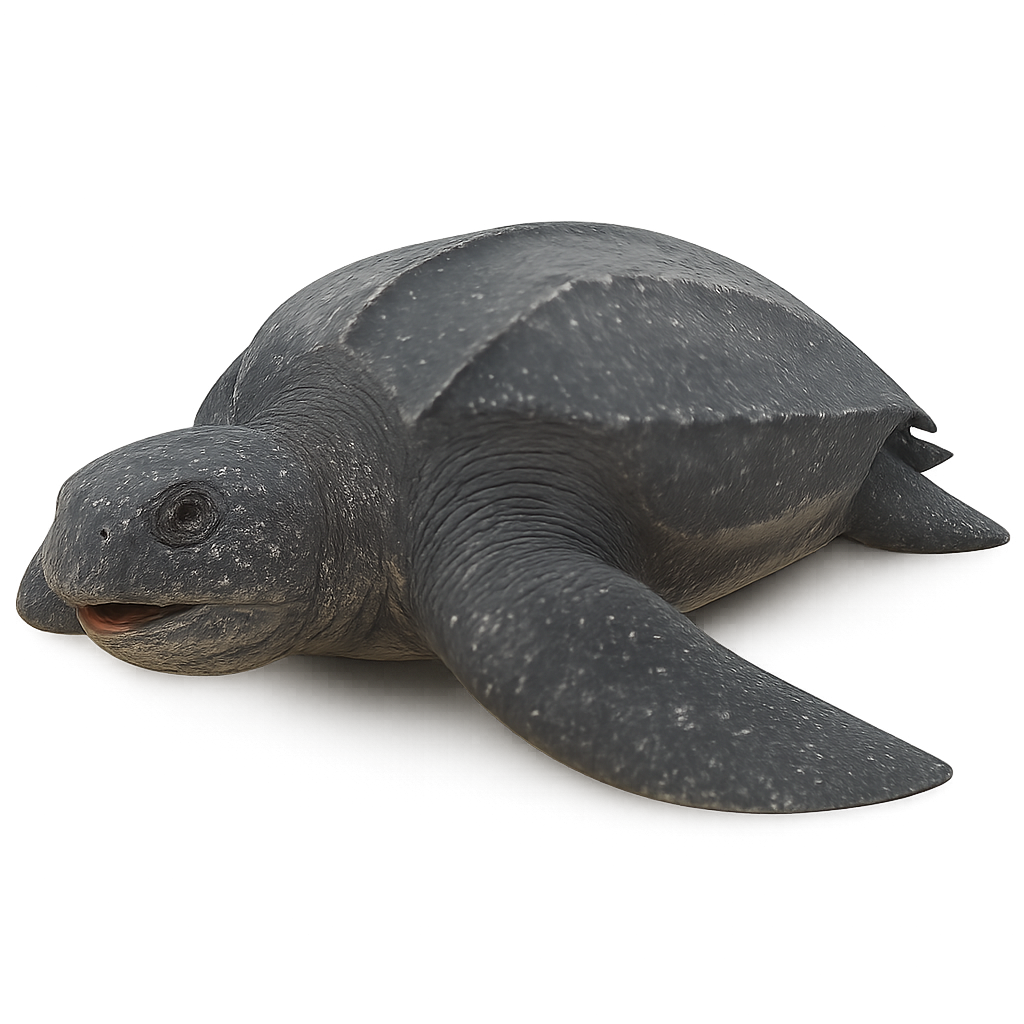Observe and photograph a species in its natural habitat
Learn where and when to observe a species in the wild, how to recognize it in the field, and what habitats it lives in. Get photography tips adapted to its behavior and capture stunning images without disturbing the animal. For full details, open the complete profile in the WildlifePhotographer app.
Leatherback sea turtle
Scientific name: Dermochelys coriacea

IUCN Status: Endangered
Family: DERMOCHELYIDAE
Group: Marine reptiles
Shyness: Suspicious
Safe distance: 50 m
Breeding season / Courtship: 01.03-31.05
Gestation: 9 à 12 mois
Births: 01.07-31.10
Habitat:
Tropical and subtropical oceans, coastal zones, and sandy beaches for nesting
Description:
The Leatherback Turtle is the largest of all sea turtles and one of the largest reptiles in the world. It typically measures between 2 and 2.5 meters in length, with a weight ranging from 250 to 700 kg, although some individuals can reach up to 900 kg. Its shell is usually dark in color, sometimes tinged with gray or brown, and is covered with small, tile-like plates. The Leatherback Turtle is an excellent swimmer, capable of covering long distances across oceans. It primarily feeds on jellyfish, which it catches while swimming in deep waters. Despite its impressive size, the Leatherback Turtle is critically endangered due to plastic pollution, the loss of its nesting habitats, and poaching. Its population is declining, and it is protected in many countries.
Recommended lens:
>=200 mm
Photography tips:
To photograph the leatherback turtle, it is best to use a telephoto lens to capture their majestic movements in the water or as they arrive on the beach. The soft light of the morning or evening is ideal to avoid harsh shadows and capture sharp images. Stay discreet, especially during the nesting period, and maintain a safe distance to avoid disturbing them.
Ready to take action?
Choose your platform and start your free trial today



